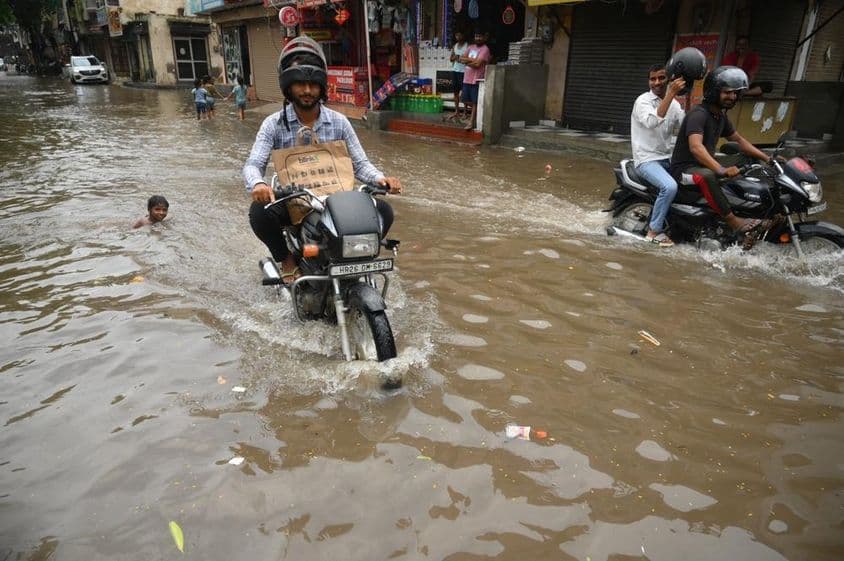Racing to Dubai: Storms and Travel Chaos

Back from India Despite Storms: Racing Against Time to Catch Their Dubai Flights
The usual monsoon rains in August have particularly severe consequences in the southern and western parts of India. Many residents returning to the United Arab Emirates are trying to get back to Dubai or Abu Dhabi from their summer vacation under extreme conditions. Days of heavy rains, the opening of reservoirs, red alerts, stopped trains, and flooded roads are causing serious disruptions—not only in domestic travel but in international journeys as well.
Embarking 12 Hours Before Departure – No Luxury but Necessity
From the settlement of Honnavara in the state of Karnataka, it typically takes less than four hours to reach Mangalore Airport. However, due to the opening of reservoirs and torrential rains, some travelers are now calculating double the travel time. Those who could, started a day earlier to ensure they don't miss their flights to Dubai. Road conditions are constantly changing, with water up to the knee in some sections, while full road closures are in effect elsewhere. Travelers often cannot relax even after reaching the airport, as they must wait hours for flights that frequently delay due to the extreme weather.
Mumbai and Maharashtra: Impassable Roads and Flooded Routes to the Airport
The situation around Mumbai is no better. Due to weeks of rain in the western state, the city is almost completely paralyzed. Authorities have issued a red alert, local trains have stopped, and airport traffic is experiencing significant delays. In one day, more than 150 departures were delayed, and the number of landings decreased as well. Although Mumbai airport is officially operating, passengers are asked to arrive well in advance of their flight and stay in contact with their airline.
Many – such as those coming from Ratnagiri or other interior regions – have booked a hotel in Mumbai a day earlier, hoping this will make it easier to get to the airport. However, even the journey from the hotel to the departure terminal took hours due to flooded streets, stalled cars, and traffic chaos.
Not Only Those Coming From Afar Struggle
Residents within Mumbai cannot breathe easy either. A 45-kilometer journey from the Dombivli district to the airport can take up to six hours, as local trains have stopped, and taxis and other means of transportation are stuck in gridlocks. Travelers are forced to take every precaution—they won’t eat or drink, just to ensure they arrive on time despite tension and stress.
For many, the major lesson is that traveling during the monsoon season poses extreme risks, especially when trying to catch international flights from inner regions of India. Many have already decided to avoid traveling home during the rainy season in the future.
Panic and Uncertainty: Families Fleeing the Storm in Droves
Among the returning UAE residents, fear and anxiety are widespread. Some families, with three or four children, are trying to escape from the locked-down cities. It's not uncommon for rebooking a ticket to cost between 2,000–3,000 dirhams if one misses their flight. This encourages many to start their journey 8–10 hours before departure, with some trying to find accommodation near the airport, even if just for a few hours.
As a result of the rainfall, not only road and rail transport collapsed, but everyday life has come to a halt as well. In some regions, schools have been closed, shops have emptied, and water supplies are disrupted. This adds to the pressure felt by those eager to reach their flights at any cost, especially when returning to work or school in Dubai or other UAE cities.
Monsoon Rains Are Not New – But They're Becoming More Unpredictable
The monsoon season poses challenges every year in India, but due to the effects of climate change, the frequency and intensity of heavy rains have increased. As a result, even areas previously considered safe are struggling with serious flooding. Meteorological offices predict more rains in several states, meaning improvements in the situation are unlikely in the coming days.
Returning to the United Arab Emirates is thus not only a logistical challenge but a mental one for many. Travelers share their experiences on social media, give advice to each other, and try to provide help to those still struggling to get out.
Conclusion
The torrential rains in parts of India pose a significant obstacle for those trying to return to the UAE, especially to Dubai. The situation causes not only delays but also significant financial, logistical, and mental burdens on travelers. Based on the experiences, the most important advice is for everyone to prepare in advance: start their journey early, follow weather and traffic updates, and allow time for unforeseen events if possible. Traveling in the storm not only risks the flight departure but also safety – hence, heightened caution is the best decision.
(Source of the article is based on a release from India's meteorological bureau.)
If you find any errors on this page, please let us know via email.


